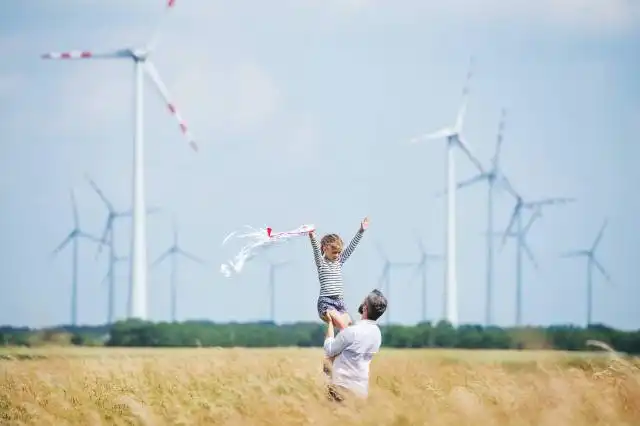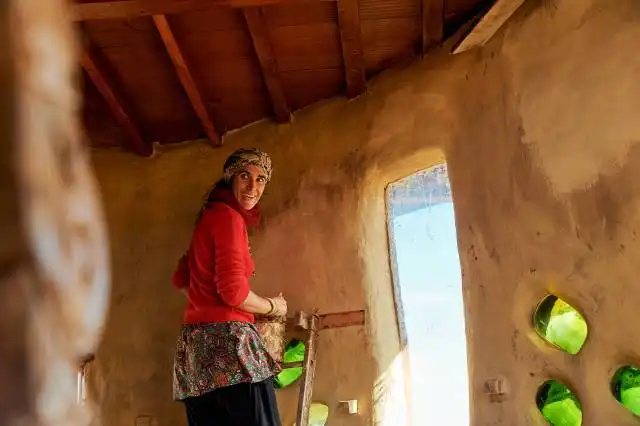Start an Eco-Friendly B&B
Living the Green Dream: Your Own Sustainable B&B
| Updated


ECO-FRIENDLY B&B
Unleash your inner green-thumb by embarking on an eco-friendly Bed & Breakfast (B&B) venture! Imagine this: cosy rooms, home-grown breakfasts, and guests leaving a tiny carbon footprint behind, every time they check out (quite literally!). Your eco-friendly inn provides accommodation and homemade meals, all while championing sustainable practices like water and energy conservation, composting, and recycling. Isn't it fun getting the best of the hospitality industry, while also being Mother Earth's best friend?
Jump to Business Plan
RELATED BUSINESS IDEAS
Browse ALL Sustainability & Eco-Friendly Initiatives Business Ideas
Discover Your Perfect Domain
Unlock the door to your online success with our hand-picked selection of premium domain names. Whether you're starting a new venture or rebranding an existing one, the right domain can set the tone for your digital presence. Browse through our curated list, each with its unique potential to enhance your brand's visibility and credibility.
ECO-FRIENDLY B&B MINI BUSINESS PLAN
This a quick reality check to help you identify the strengths and weaknesses of your business concept before you dive in.
Business Idea: Eco-Friendly Bed and Breakfast
Expected Percent Margins:
- Gross Margin: 60-75%
- Net Profit Margin: 20-35%
Earnings Expectations:
- Daily Earnings: $150 - $350 (depending on occupancy rates and pricing)
- Weekly Earnings: $1050 - $2450
- Monthly Earnings: $4200 - $9800
- Annual Earnings: $50,400 - $117,600 (assuming an average of 60% occupancy)
Actions to Hit Those Numbers:
Room/ Property Management:
- Initial setup of eco-friendly and energy-efficient appliances, focusing on sustainability.
Marketing & Customer Acquisition:
- Listings on various travel and accommodation sites to attract tourists.
- Highlighting eco-friendly features and initiatives as primary USPs.
- Exploring tie-ups with eco-tours and travel agencies for attracting likeminded customers.
Service Offerings:
- Providing organic and locally sourced meals.
- Offering experiences such as workshops, guided tours focussing on sustainable living and local culture.
Cost Control:
- Effective energy management with solar panels, low-flow plumbing fixtures, LED lighting etc.
- Implementing waste management and recycling solutions like composting.
Partnership & Collaboration:
- Networking with local artisans and farmers to support local community and provide unique experiences to customers.
These are generalized estimations and can vary depending on location, property size, prevailing rates in the vicinity and individual approaches to the business. Always keep an eye on operating costs, ongoing maintenance, and changing trends in the eco-tourism industry for optimizing income and ensuring profitability.
NOT WHAT YOU HAD IN MIND? Here are more ideas



Browse ALL Sustainability & Eco-Friendly Initiatives Business Ideas
Grab Your Business Website Name
Before you get caught up in the whirlwind of setting up your business, invest in a domain name. It's a small but significant step that lays the foundation for your brand and makes it easier for customers to find and trust you. Just like you wouldn't build a house without securing the land first, don't build a business without securing your domain name.
"Why? Can't that wait?" Here's why it shouldn't
Step 1: Determine if the Business is Right Endeavor
Breakdown of Startup Expenses
Before starting an eco-friendly B&B, it is important to understand the costs associated with the business. Start-up expenses can include the cost of purchasing a building, renovating the building to meet eco-friendly standards, purchasing furniture and appliances, and obtaining the necessary permits and licenses. Additionally, it is important to factor in the cost of marketing and advertising the business. It is important to have a thorough understanding of the costs associated with starting the business to ensure that the venture is financially feasible.
Breakdown of Ongoing Expenses
After the initial start-up costs, there are ongoing expenses associated with running an eco-friendly B&B. These expenses can include the cost of utilities, supplies, and maintenance. Additionally, it is important to factor in the cost of marketing and advertising to ensure that the business is able to attract customers. It is important to have a thorough understanding of the ongoing costs associated with running the business to ensure that the venture is financially feasible.
Examples of Ways to Make Money
Once the business is up and running, there are several ways to make money. The most obvious way is to charge customers for overnight stays. Additionally, the business can offer additional services such as catering, event planning, and tours. Additionally, the business can offer eco-friendly products such as organic food, locally-made crafts, and eco-friendly cleaning products. It is important to have a thorough understanding of the ways to make money to ensure that the venture is financially feasible.
Step 2: Name the Business
When naming a business, it is important to choose a name that is memorable and easy to pronounce. It should also be relevant to the business and reflect its values. Additionally, it should be unique and stand out from the competition. It is also important to make sure the name is not already taken by another business. To do this, it is important to check with the local chamber of commerce, the US Patent and Trademark Office, and the Secretary of State. It is also important to check if the domain name is available. Once a name is chosen, it is important to register the business name with the state. This will help protect the business from other businesses using the same name. Additionally, it is important to register the business name with the US Patent and Trademark Office to protect the business from other businesses using the same name. This will also help the business stand out from the competition and make it easier for customers to find the business online.
Step 3: Obtain Necessary Licenses
In order to start an eco-friendly B&B, the third step is to obtain the necessary licenses. It is important to research local regulations to ensure that the business is compliant with all local laws. Depending on the location, there may be different licenses required to operate a B&B. For example, some states may require a business license, a lodging license, or a food service license. Additionally, some cities may require a permit to operate a B&B. It is important to research all local regulations and obtain the necessary licenses before beginning operations.
Once the necessary licenses have been obtained, it is important to keep them up to date. This may require renewing the licenses every year or every few years. Additionally, some licenses may require additional paperwork or fees to keep them active. It is important to stay on top of the paperwork and fees associated with the licenses to ensure that the business remains compliant with local regulations.
Finally, it is important to keep all licenses on file and easily accessible. This will help to ensure that the business is able to provide proof of compliance if necessary. Additionally, it is important to keep all licenses up to date and in good standing. This will help to ensure that the business is able to remain in operation and continue to provide eco-friendly services.
Step 4: Find a Suitable Location
When deciding on a location for your eco-friendly B&B, there are a few key considerations to keep in mind. First, consider the local climate and environment. You want to make sure that the area you choose is conducive to the type of eco-friendly practices you plan to implement. For example, if you plan to use solar energy, you will need to make sure the area receives enough sunlight. Additionally, you should consider the local zoning laws and regulations to make sure that you can legally operate a B&B in the area.
Researching Potential Locations
Once you have identified a few potential locations, you should research them thoroughly. Look into the local economy, population, and tourism industry to get an idea of the potential demand for your business. Additionally, you should research the local competition to make sure that there is enough room in the market for your B&B. Finally, you should research the local amenities and attractions to make sure that your guests will have plenty to do during their stay.
Choosing the Right Location
Once you have done your research, it is time to make a decision. Consider all of the factors you have researched and make sure that the location you choose meets all of your needs. Additionally, make sure that the location is accessible to your target market. For example, if you plan to cater to eco-tourists, make sure that the location is close to popular attractions and activities. Finally, make sure that the location is within your budget.
Step 5: Design the Space
When designing the space for an eco-friendly B&B, it is important to consider the environment and the guests. The design should be comfortable, inviting, and energy efficient. Consider using natural materials such as wood, stone, and bamboo, as well as energy efficient lighting and appliances. It is also important to consider the layout of the space, including the number of rooms, the size of the common areas, and the placement of furniture.
Incorporating Eco-Friendly Features
Incorporating eco-friendly features into the design of the space can help to reduce energy costs and create a more sustainable environment. Consider installing solar panels, using low-flow fixtures, and utilizing natural ventilation. Additionally, consider using green cleaning products and energy efficient appliances.
Decorating the Space
When decorating the space, it is important to consider the overall aesthetic. Choose colors and textures that create a warm and inviting atmosphere. Consider using natural materials such as wood, stone, and bamboo, as well as energy efficient lighting and appliances. Additionally, consider incorporating eco-friendly features such as recycled furniture and artwork.
Creating an Outdoor Space
Creating an outdoor space for guests can be a great way to add value to the B&B. Consider adding a patio or deck, as well as a garden or outdoor seating area. Additionally, consider incorporating eco-friendly features such as native plants and solar lighting. This can create a relaxing and inviting atmosphere for guests.
Creating a Sustainable Environment
Creating a sustainable environment is an important part of running an eco-friendly B&B. Consider using natural materials such as wood, stone, and bamboo, as well as energy efficient lighting and appliances. Additionally, consider using green cleaning products and energy efficient appliances. Finally, consider incorporating eco-friendly features such as solar panels, low-flow fixtures, and natural ventilation. This can help to reduce energy costs and create a more sustainable environment.
Step 6: Purchase Necessary Supplies
When purchasing supplies for your eco-friendly B&B, it is important to consider the environmental impact of the materials you are using. Look for materials that are made from renewable sources, such as bamboo, hemp, or organic cotton. Additionally, look for products that are made with minimal packaging and are free from toxins and hazardous chemicals. It is also important to consider the energy efficiency of the products you are purchasing. Look for products that are energy-star certified and have a low carbon footprint.
Finding Suppliers
Once you have determined the types of supplies you need, you can begin to search for suppliers. Look for local suppliers that offer eco-friendly products. This will help to reduce the carbon footprint of your business. Additionally, you can search online for suppliers that specialize in eco-friendly products. Many of these suppliers offer discounts for bulk orders, so it is worth shopping around to find the best deals.
Purchasing Supplies
Once you have found the right suppliers, you can begin to purchase the supplies you need. Make sure to read the product descriptions carefully to ensure that you are getting the right products for your business. Additionally, it is important to compare prices to ensure that you are getting the best deal. Finally, make sure to check the return policy of the supplier in case you need to return any items.
Step 7: Market the Business
When it comes to marketing the business, there are a few different ways to do so. First, it is important to create a website for the business. This website should include information about the business, such as the types of eco-friendly services the business offers, the location of the business, and contact information. Additionally, it is important to create a presence on social media platforms such as Facebook, Twitter, and Instagram. This will help to spread the word about the business and reach potential customers.
Another way to market the business is to create a blog. This blog should include information about eco-friendly practices, tips on how to be more eco-friendly, and information about the business. Additionally, it is important to create relationships with other eco-friendly businesses, such as local farmers, to help promote the business. Finally, it is important to create a referral program to encourage customers to refer the business to their friends and family.
Tips for Marketing the Business
When it comes to marketing the business, it is important to create a plan and stick to it. This plan should include a budget for marketing, a timeline for when certain tasks should be completed, and a list of goals that need to be achieved. Additionally, it is important to be consistent with marketing efforts and to track the results of each marketing campaign. This will help to ensure that the business is reaching its target audience and that the marketing efforts are successful. Finally, it is important to be creative and think outside the box when it comes to marketing the business. This will help to ensure that the business stands out from the competition.
Step 8: Set Up an Online Presence
Setting up an online presence is an important part of running a successful business. There are many different ways to do this, such as creating a website, setting up social media accounts, and creating an email list. A website is a great way to showcase your business, provide information about your services, and give potential customers an easy way to contact you. Social media accounts can be used to promote your business and interact with customers. Creating an email list is also a great way to keep customers updated on your business and any special offers or discounts you may have.
Tips for Setting Up an Online Presence
When setting up an online presence, it is important to make sure that your website is professional, easy to navigate, and up to date. It is also important to make sure that your social media accounts are active and engaging. You should also make sure that your email list is secure and that customers are able to opt-out if they wish. Additionally, it is important to make sure that all of your online accounts are properly linked together so that customers can easily find your business.
Step 9: Open for Business
Obtain necessary licenses and permits Before opening for business, it is important to ensure that all necessary licenses and permits are obtained. This will vary depending on the state and local regulations, but typically includes a business license, health permit, and any other permits required for the specific type of business. It is also important to check with the local zoning board to ensure that the business is in compliance with local zoning laws.
Set up a website In today’s digital world, it is important to have an online presence. This can be done by setting up a website or utilizing social media platforms. This will allow potential customers to learn more about the business and the services offered. Additionally, it is important to ensure that the website is optimized for search engines so that it can be easily found by potential customers.
Market the business Once the website is set up, it is important to market the business. This can be done through a variety of methods, such as social media, email marketing, and search engine optimization. Additionally, it is important to ensure that the business is listed in local directories and online travel sites.
Hire employees Depending on the size of the business, it may be necessary to hire employees. This includes hiring staff to manage the day-to-day operations, as well as any additional staff needed to provide services to customers. It is important to ensure that all employees are properly trained and have the necessary skills to provide excellent customer service.
Set up a payment system Finally, it is important to set up a payment system for customers. This can be done through a variety of methods, such as credit card processing, online payment systems, or cash. It is important to ensure that the payment system is secure and that customer information is kept safe.
EXPLORE MORE CATEGORIES
Browse ALL Business Idea Categories
TAKE THE NEXT STEPS










